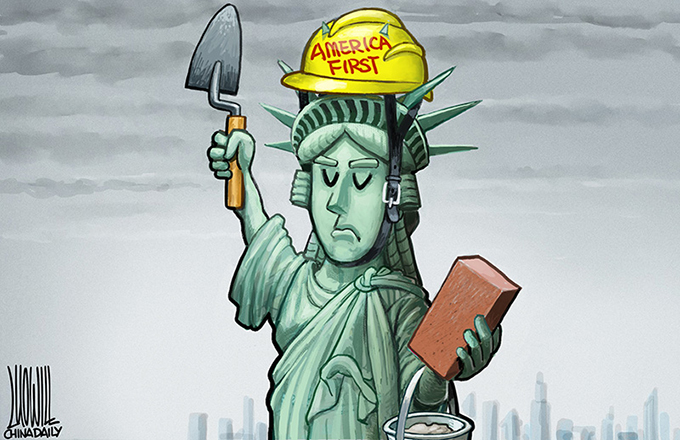
U.S. Secretary of Commerce Wilbur Ross announced June 2, 2018 that, as of now, his country is imposing a tax on steel (25 percent) and aluminum imports (10 percent) originating from Mexico, Canada and the European Union. This carries out Donald Trump’s threat that he would impose tariffs on such goods without waiting to see if the renegotiations underway on the North American Free Trade Agreement will produce concrete results.
The governments of the affected countries immediately denounced the decision and announced the adoption of “compensatory measures” on their imports of U.S. products, Mexican President Enrique Peña Nieto said after a telephone conversation with Canadian Prime Minister Justin Trudeau. In the case of our country of Mexico, Economy Minister Ildefonso Guajardo announced that “equivalent measures” would be put in place “on a variety of products, such as flat steel, lamps, pork hams and shoulders, sausages and prepared foods, apples, grapes, cranberries and various cheeses, among others, up to an amount comparable to the effects of the U.S. tariffs.” For their part, the Canadian authorities announced special taxes of $12.8 billion in response to Washington’s “totally unacceptable” tariff decision.
The Trump administration’s decision with respect to steel and aluminum imports also affects the European Union, but German Chancellor Angela Merkel said the members of that economic bloc have already reached an agreement to give a “smart, determined and jointly agreed” response to U.S. protectionist measures, and indicated that these measures violate the rules of the World Trade Organization.
It is important to keep in mind that the White House’s restrictive provisions apply not only to purchases of metal products from its closest allies, but also to other countries and to other products. Already at the beginning of the week, Ross announced the imposition of 25 percent tariffs on $50 million worth of Chinese products that contain “industrially significant technology.” The detailed list of affected products is to be released on June 15. In short, although the real purpose is to gain an advantage in various stages of negotiation and readjustment of the relationships, Trump’s protectionist decisions have enough depth to provoke a trade war with his key partners on the planet. Obviously, this assumes that they fall for the provocation.
Washington’s counterparts may be capable of acting firmly, but at the same time, with restraint, i.e., limiting themselves to adopting countermeasures strictly proportional to the U.S. measures. Given that, and to the extent that what they are looking for is a greater diversification of world trade, the Republican tycoon’s attempt to start a global trade war will fail, and the U.S. economy will suffer the most. As it turns out, the Mexican peso has fallen again relative to the U.S. dollar. But it is significant that in yesterday’s trading day, the three principal Wall Street indexes closed with losses, and companies with intensive use of metals, such as Caterpillar, recorded losses of 2.3 percent in share value.
However, beyond this, Moody’s Investors Service argues that Trump’s protectionist measures could boost some products at a local scale but are likely to damage the U.S. economy as a whole. “They would increase input costs for a range of manufacturers, potentially feed into overall price levels and may invite retaliatory measures that hurt certain U.S. exporters,” said the firm’s managing director, Atsi Sheth.
Finally, in terms of trade, as in other areas, it does not look like it is going to be easy for the Republican president’s feints, intimidating maneuvers and demagogic actions to succeed in changing the geostrategic and economic balance in favor of Washington. On the contrary, it could actually undermine the position of the United States in the world, severely and irreparably.

Leave a Reply
You must be logged in to post a comment.